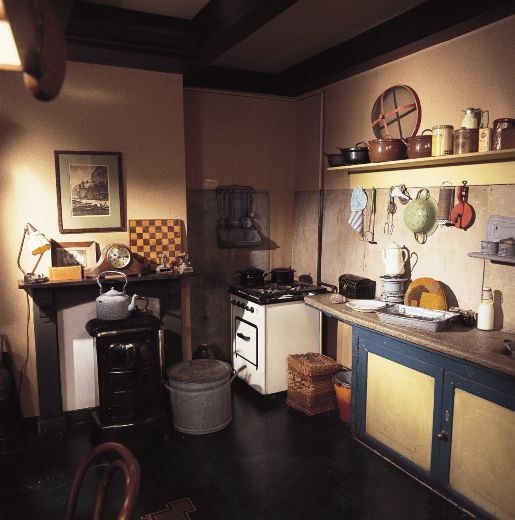

The ground floor consisted of three sections the front was the goods and dispatch entrance, behind it in the middle section were the spice mills, and at the rear, which was the ground floor of the annex, was the warehouse where the goods were packed for distribution. On 1 December 1940, Anne's father, Otto Frank, moved the offices of the spice and gelling companies he worked for, Opekta and Pectacon, from an address on Singel canal to Prinsengracht 263.

At the start of the 20th century, a manufacturer of household appliances occupied the building, succeeded in 1930 by a producer of piano rolls, who vacated the property by 1939. Subsequently, the building became a warehouse, and the front warehouse with its wide stable-like doors was used to house horses. It was a private residence until the nineteenth century - in 1821, for instance, a Captain Johannes Christiaan van den Bergh, plaats-majoor der tweede klasse (adjutant third class) resided there.

The canal-side façade dates from a renovation of 1740, when the rear annex was demolished. The house – and the one next door at number 265, which was later purchased by the museum – was built by Dirk van Delft in 1635. The (reconstructed) movable bookcase that covered the entrance to the annex, built by Bep Voskuijl's father Johannes Voskuijl in 1942. In 20, the museum had 1.2 million visitors and was the 3rd most visited museum in the Netherlands, after the Rijksmuseum and Van Gogh Museum. It preserves the hiding place, has a permanent exhibition on the life and times of Anne Frank, and has an exhibition space about all forms of persecution and discrimination. Ten years later the Anne Frank Foundation was established to protect the property from developers who wanted to demolish the block. She did not survive the war but her wartime diary was published in 1947. The building is located on a canal called the Prinsengracht, close to the Westerkerk, in central Amsterdam in the Netherlands.ĭuring World War II, Anne Frank hid from Nazi persecution with her family and four other people in hidden rooms, in the rear building, of the 17th-century canal house, later known as the Secret Annex ( Dutch: Achterhuis). The Anne Frank House ( Dutch: Anne Frank Huis) is a writer's house and biographical museum dedicated to Jewish wartime diarist Anne Frank.


 0 kommentar(er)
0 kommentar(er)
